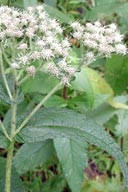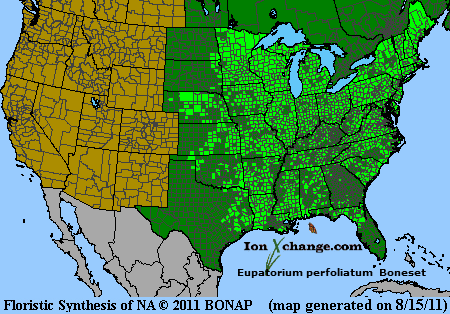 Loading... Please wait...
Loading... Please wait...- Home
- SEEDS
- SEED MIXES
- BUY PLANTS
- Info Request
-
Educational Videos
- Greenhouse Transplanting Demonstration
- Native Seed Cleaning demonstration at Ion Exchange Native Seed and Plant Nursery
- Attracting Butterflies
- Bidens - Bidens cernua Harvest Video
- Big Blue Stem Harvest
- Butterfly Milkweed Video
- Button Blazingstar - Liatris aspera Video
- Buttonbush - Cephalanthus occidentalis Video
- Canada Anemone - Anemone canadensis Harvest Video
- Cardinal Flower - Lobelia cardinalis Video
- Control Burn - Wildflower Field
- Cream Gentian - Gentiana flavida
- Culver's Root - Veronicastrum virginicum Video
- Cup Plant - Silphium perfoliatum Video
- Dormant Seeding | Planting
- Earthyman's Favorite Wildflowers Video
- Eco-Friendly Golf Course Seed Mix
- Floating Islands
- Fringed Loosestrife - Lysimachia ciliata Video
- Giant Yellow Hyssop - Agastache nepetoides Video
- Indiangrass - Sorghastrum nutans Video
- Iowa Prairie Partner Program
- Leadplant - Amorpha canescens (Potted) Video
- Meadow Blazingstar - Liatris ligulistylis
- Midland Shooting Stars - Dodecatheon meadii Video
- Native Plant Nursery Field Irrigation Experiment
- Nodding Onion - Allium cernuum Video
- Ohio spiderwort - Tradescantia ohiensis Video
- Old Man's Beard - Clematis virginiana blooms Video
- Oxeye Sunflower - Heliopsis helianthoides Video
- Prairie Spiderwort - Tradescantia bracteata
- Purple Coneflower - Echinacea purpurea Video
- Rain Garden or Water Garden Video
- Rattlesnake Master - Eryngium yuccifolium Video
- Riverbank Stabilization - Wetland Plants
- Rose Mallow - Hibiscus militaris Video
- Rosinweed - Silphium integrifolium Video
- Royal Catchfly - Silene regia
- Showy Tick Trefoil - Desmodium canadense Video
- Sneezeweed - Helenium autumnale Video
- Swamp Betony - Pedicularis lanceolata Video
- Swamp Milkweed - Asclepias incarnata Video
- Sweet Blackeyed Susan - Rudbeckia subtomentosa Video
- Tall Coreopsis - Coreopsis tripteris Video
- Urban Butterfly Garden
- Wild Bergamot - Monarda fistulosa Video
- Wild Geranium - Geranium maculatum Harvest
- Wild Goldenglow - Rudbeckia lanciniata Video
- Wild Petunia - Ruellia humilis Harvest Video
- Woodland Knotweed - Polygonum virginianum Video
- Yellow Coneflower - Ratibida pinnata Video
- Blog
- Resources
- Policies
Contact Us
Phone:
563-419-0837
or 563-535-7231
Email:
hbright@ionXchange.com
Browse Products
Add to Wish List
You Recently Viewed...
Our Newsletter
Product Description
"Boneset, Agueweed, Crosswort, Indian Sage, Thoroughwort, Throughwort"
Greek, from the name of the King of Pontus, Eupator and perfoliatum from per (through) and folium (leaf) referring to the way the stem grows "through" the leaves.
A far-ranging species found along the edges of streams and marshes. Blooms from June into September. Can grow to five feet in favorable conditions with eight inch leaves. Flowers are white with a blue tinge and grow on heads with ten to forty flowers in each head.
Used extensively as a medicine. The leaves contain glucoside, used as a tonic or stimulant or in larger doses as an emetic. Native Americans used it as a tonic for dyspepsia and "general debility". It also served as a remedy for the flu and rheumatism. The common name "Boneset" refers to the fact that an ounce to a pint of boiling water was used to treat dengue or "breakbone fever". Used by Midwestern Native Americans as a tea to help break a fever and treat bronchitis, sore throats and colds. It is also reported to be a laxative or stimulant in smaller doses.
| Sun Exposure | Prairie, Savanna |
| Soil Moisture | Wet, Wet Mesic |
| Bloom Time |
Summer, Fall July, August, September |
| Bloom Color | White |
| Max Height | 4 feet |
| Wetland Code | FACw+ |
| Germ Code | C(30), D |
| Seeds Per Packet | 750 |
| Seeds Per Ounce | 160,000 |
Edible Uses: Unknown
Medicinal Uses: Thoroughwort is one of the most popular domestic medicines in North America where it is used in the treatment of influenza, colds, acute bronchitis, catarrh and skin diseases. It has been shown to stimulate resistance to viral and bacterial infections, and reduces fevers by encouraging sweating. The plant, however, should be used with some caution since large doses are laxative and emetic and the plant might contain potentially liver-harming pyrrolizidine alkaloids. The leaves and flowering stems are antispasmodic, cholagogue, diaphoretic, emetic, febrifuge, laxative, purgative, stimulant, vasodilator. A hot infusion of the dried leaves and flowers is used as a very effective treatment to bring relief to symptoms of the common cold and other similar feverishness - it loosens phlegm and promotes its removal through coughing. This herb is practically unequalled in its effectiveness against colds. It is also used in the treatment of rheumatic illness, skin conditions and worms. The leaves and flowering stems are harvested in the summer before the buds open, and are dried for later use. A homeopathic remedy is made from the fresh plant, harvested when it first comes into flower. It is used in the treatment of illnesses such as flu and fever.
Herbal Uses: Unknown












